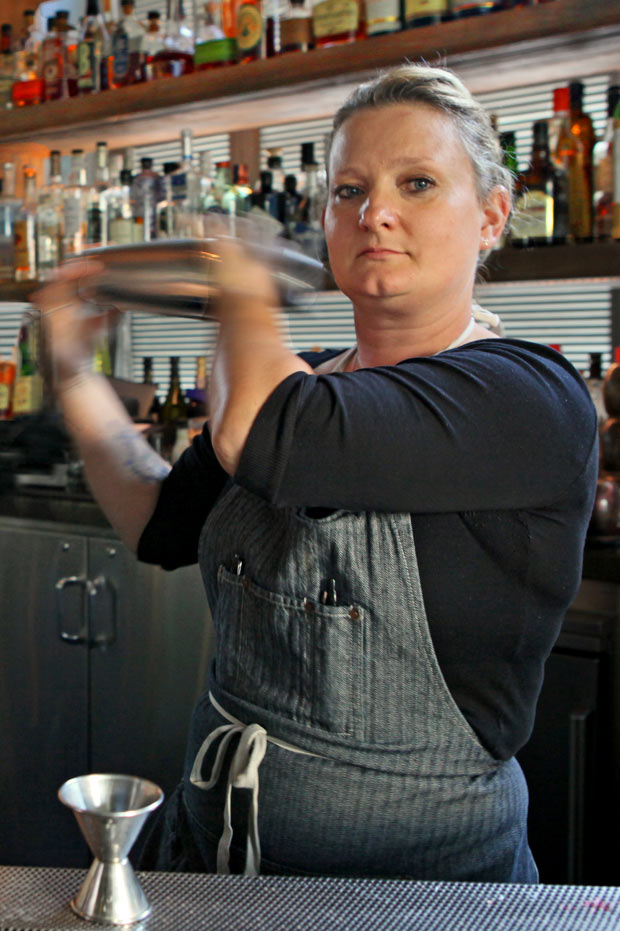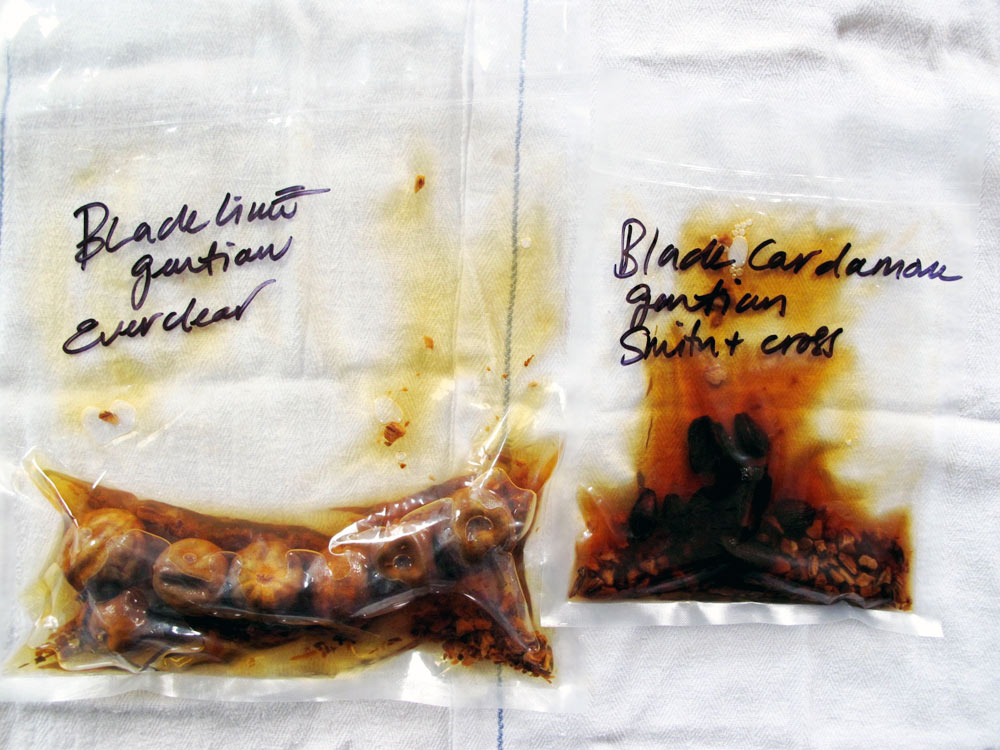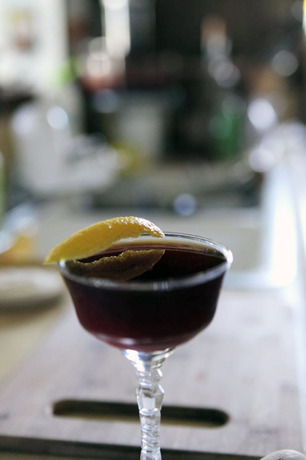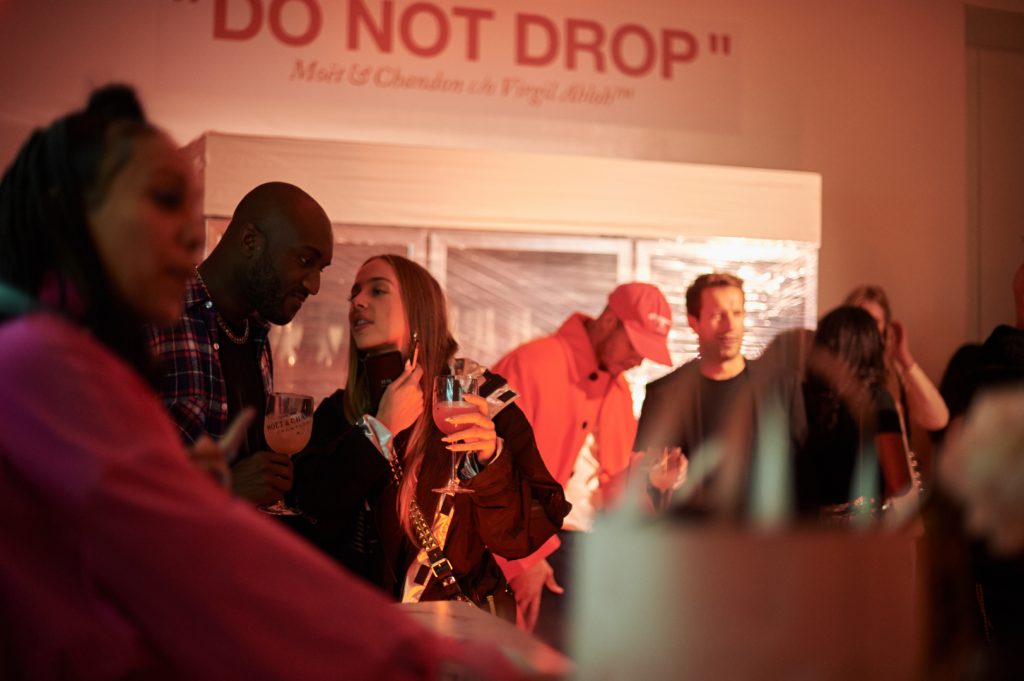Culinary Cocktails
Hickory-smoking and sous-vide infusing, just a few methods Gabriella Mlynarczyk is using to make new drinks

by Paul Cantagallo


As the dubious figure of the “mixologist” continues to get promoted on shows like Portlandia and in music video spoofs, a new generation of bartenders are looking for inspiration in, of all places, the kitchen. Among them is Gabriella Mlynarczyk of the restaurant ink. in Los Angeles. Thanks to her background in cooking and training in pastry, her restless creativity and working proximity to phenom chef Michael Voltaggio, Mlynarczyk’s “culinary cocktails” are drawing attention in the LA food and beverage world and helping usher in a new category of drink.

Culinary cocktails are inspired by typical dishes from progressive restaurant menus. Using sophisticated cooking techniques adapted from molecular gastronomy has allowed Mlynarczyk not only to raise the profiles of her cocktails, but to lend them “from scratch” authenticity and an unexpected “wow” factor. Mlynarczyk prepares mixes and bitters using a sous-vide, and lately she’s been combining traditional gentian root and bark with liquorice. She cooks her mixtures under vacuum at low temperature for about four hours, infusing flavors into the alcohol, which doesn’t evaporate on account of the vacuum. The process is leaps improved on the traditional method, which involves a jar, a dark corner, regular shaking and a two week prep time.
Gabriella also uses sous-vide in one of her most popular cocktails, the “White-rum-banana-brown butter.” Riffing off banana bread, the ingredients are cooked for an hour or two to achieve an infusion that would normally take a full day. Once that’s done, Gabriella carbonates the drink herself, which takes a further 24 hours. The result is incredibly light and tangy—especially for a cocktail inspired by something as dense as banana bread.


For her spring program, Mlynarczyk’s been experimenting with a gelatin-filtration method originally used to make consommes and popularized by food science writer Harold McGee. The method allows for the infusion of flavor components without color transfer, and Mlynarczyk hopes it will yield the first completely clear mojito. She takes plant matter and juices (like mint and clarified lime juice for the mojito) and combines them in a gelatin solution before freezing it. As the concoction defrosts, the matter clings to the gelatin while the flavors melt off.
Mlynarczyk has also been playing with her new “smoking gun” to smoke liquids like tomato water, tequila, vodka and even Coca-Cola. Using the gun cuts hours and sometimes days of time out of the labor-intensive process of conventional smoking, which yields faster results and greater room for experimentation. So far, she’s most proud of her hickory-smoked Jack & Coke.


As modern restaurants continue to adopt the machinery and techniques of the molecular gastronomy revolution in food, so too will their bartenders. Mlynarczyk is among a new breed of bar chef whom the prep cooks and even the Executive Chef are comfortable calling their own, even if they may sometimes wish she’d quit stealing all their tricks and gadgets for her stellar drinks.
For more about Mlynarczyk—and recipes for her exotic cocktails—check out her libatious blog, Loving Cup.
Also on CH: Wiki Cells Cocktails
Images by Patrick O’Brien-Smith; Portrait by Elizabeth Daniels












